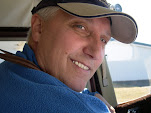At the urging of a friend, I decided to go flying yesterday. I hadn't been in the air since my last flight review almost three months ago. So I came early to do my preflight and to make a few trips around the pattern and my obligatory 3 landings.
I guess it just wasn't meant to be though. I first noticed that the fuel was low in the right tank and asked to have them top off the fuel. Then I noticed that there was a piece of the plane missing. I might not have noticed but for the part that had been broken and was still attached. It surrounds the air filter and (I suppose) is at least partially there to keep the filter in place. There were also screws that are meant to attach the air filter. One came off in my hand during examination.
I proceeded with my preflight. Ever since I had a tire blow-out on landing I've paid particular attention to the condition of the tires in my preflight. The right main had no tread. I could see several flat spots where someone must have landed with their feet on the brakes. (NOT GOOD)
The left main had remnants of tread but was noticeably low on air pressure. The nose wheel was the best of the three, but I try to avoid landing on that one...
I scrubbed the flight and reported the defects to the FBO.
Rather than wasting the drive to the airport, I decided to go visit Glacier Aviation. They are a first class operation. I visited with the Mike (the owner) and he directed my attention to his new Light Sport aircraft. I kicked the tires and got in it and made some airplane noises much like the little Rotax engine. He tells me it tops out around 120mph and only burns about 4gph. That's not bad! The Cessna 172 I'm accustomed to flying burns more than twice as much and doesn't go that much faster.
Summary
Although I was disappointed not to fly, I was glad and thankful that I have learned not to take preflight inspection lightly.
When it comes to renting a plane; I think I will only fly Glacier's planes from now on.










